On this page
This information explains the requirements for child restraint upper anchorages for individuals importing their own car when entering South Australia from overseas.
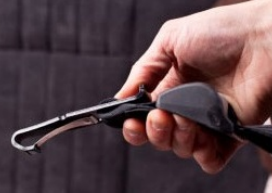
All passenger cars manufactured for the Australian market must have upper anchorages for child restraint top tethers.
On entering South Australia vehicles are subject to inspection prior to registration; we will check for the presence and location of child restraint upper anchorages insofar as we can without dismantling.
South Australian requirements
The South Australia Road Traffic (Light Vehicle Standards) Rules 2018, Part 3, Division 2, section 25 – Partial exception to compliance with Australian Design Rules (ADRs) – personally imported vehicles, states :
'(2) A personally imported vehicle must be fitted with: (c) child restraint anchorages that meet the number, location, accessibility, thread size and form requirements of second edition ADR 34 or third edition ADR 5 or 34.'
Also at:
'(3) However, a personally imported vehicle need only meet the requirements of an ADR mentioned in subrule (2) if the ADR recommends that it should apply, or applies, to a vehicle of the same type.'
Note: ‘vehicle type’ means for example - sedan, ute, or wagon.
Australian Design Rule 34/.. extract
34.2 GENERAL REQUIREMENTS
34.2.2 Each ‘Child Restraint Anchorage’ provided shall:
34.4.1.3 be so designed and located that no items need to be removed to gain access to it for the installation of the ‘Child Restraint Anchor Fitting’, except closure plugs, or other items, removable with the use of simple hand tools.
34.5 CHILD RESTRAINT ANCHORAGE LOCATION REQUIREMENTS
34.5.1. In addition, each ‘Child Restraint Anchorage’ and ‘Child Restraint Anchor Fitting’ shall be located within the vehicle in a part of the body structure which would not normally be movable, or if movable would cause any ‘Upper Anchorage Strap’ to be stretched when moved.
34.6 ACCESSIBILITY TO ENGAGE AN ATTACHING CLIP
34.6.1 Clearance shall be provided around each ‘Child Restraint Anchor Fitting’ to allow latching and unlatching, without the use of tools, of the ‘Attaching Clip’ to the ‘Child Restraint Anchor Fitting’ when it is installed in the vehicle.
Figures 1 and 2 show a typical upper anchorage and attachment clip.
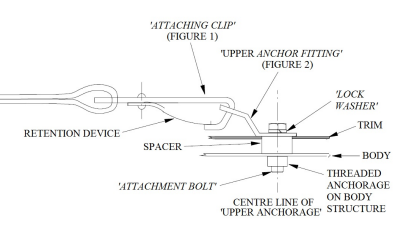
Figure 1

Figure 2
Note: The spacer and trim are not prerequisites.
Cabriolets with active rollover protection
Vehicle manufacturers provide rollover protection for vehicle users on their cabriolet models.
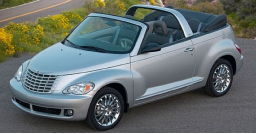
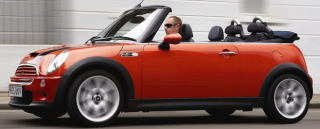
While some manufacturers incorporate clearly visible and permanently fixed roll bars into vehicle design others provide ‘active rollover protection’; this being quickly deployed in the case of a vehicle rolling to protect passengers, and remains out of sight within the vehicle construction until such an incident occurs.
On many cabriolet-type vehicles with an ‘active rollover protection’ system, the more usual location and route to access child restraint upper anchorages are not available due to the need for the rollover protection device or devices to deploy from the area immediately to the rear of the rearmost seating.
In Australian market cabriolet-type vehicles, access to the child restraint upper anchorage is often provided via the rear seat backrest; some examples are provided below:
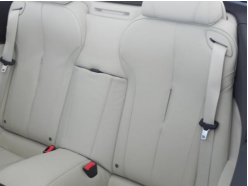

BMW - concealed zip in seat backrest seam, with zip open
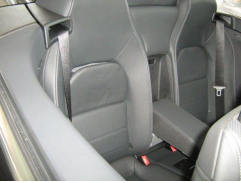

Mercedes - concealed behind a removable panel in seat backrest, and with panel removed
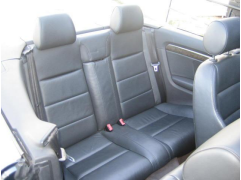
Audi - concealed between upper sections of seat backrest
It is important to establish that anchor points are present, and anchor fittings are attached. Also, that access to these is provided so that the attaching clip can be easily latched onto the anchor fitting without the use of tools.
We need to ensure that all vehicles meet this requirement before they enter service, even if you do not have children and can foresee no need for these in your vehicle.
Next steps
If your inspection identifies that child restraint upper anchorages have not been found, or cannot be accessed, you will need to:
- Confirm that the anchorages are already in place on the vehicle - this may involve some dismantling, removing the rear seat back etc. or seek advice from the vehicle manufacturer’s local servicing agent as the same model may be available in Australia and they should be able to confirm that the anchorages or the locations for fitting them are present.
- If the anchorages are not present the locations to bolt them into may be there and you will need to obtain and properly fit them using appropriate bolts - the manufacturer’s agent may do this or can advise you about local services, or you may wish to obtain this service from some other service provider.
- If the anchorages are not present and you are advised they were never intended to be fitted in your vehicle perhaps because the model you have was never intended for a market that required these - you will need to seek the advice of a light vehicle engineering signatory (LVES) as we will need a formal report from an LVES for your vehicle. Any report provided by an LVES must be made available to Vehicle Standards in advance of the vehicle being returned for re-inspection.
- When work has been completed, the anchorages have been confirmed present or fitted, and provision of access to them has been made, or your LVES report has been submitted to Vehicle Standards, your vehicle is ready for re-inspection.
- Book your vehicle in for inspection, obtain a single trip permit, and bring your vehicle back to us for inspection - as part of the final inspection, we will need to be able to see the anchorages via the access route you have established for these or confirm the alternative engineered solution has been completed according to the LVES report.
The list of Light vehicle engineering signatories.
Vehicle Standards reference: MR1292.

